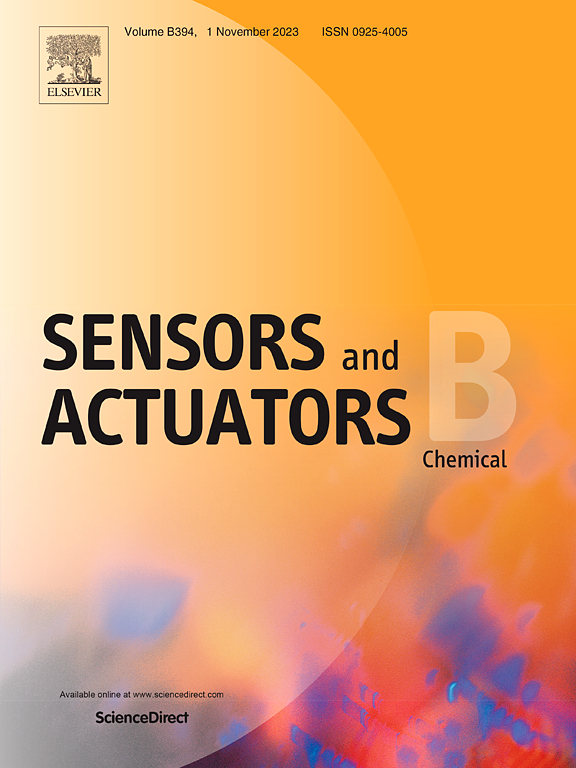基于密闭空间增强AIE效应的新型比例荧光Zn-MOF无设备糖精检测:探针的设计、传感性能及实际应用
IF 3.7
1区 化学
Q1 CHEMISTRY, ANALYTICAL
引用次数: 0
摘要
糖精(SAC)是一种广泛使用的低热量甜味剂,也被列为2B类致癌物。然而,用于SAC检测的荧光探针很少被报道。在此,我们揭示了第一种基于新型比例荧光探针MOF-1@RhB的无设备高选择性检测糖精的方法。通过一锅溶剂热合成将RhB物理封装在MOF-1中作为内部自定标得到MOF-1@RhB。在SAC存在的情况下,可以观察到MOF-1@RhB从橙色到绿色的肉眼可分辨的颜色变化。MOF-1@RhB对SAC的检测具有响应速度快(30秒)、线性范围宽(0 ~ 160 μM)、检出限好(LOD = 109 nM)的特点。利用MOF-1@RhB,制备了纸质传感器,并将其用于现场检测。一种集成智能手机和纸质传感器的便携式设备已经开发出来,用于即时检测。在实际样本检测中,可以使用智能手机拍摄纸张传感器的照片,然后使用专用的智能手机应用程序进行分析,以得出SAC浓度。该方法已成功应用于食品样品中SAC的监测,并通过高效液相色谱法验证了其准确性。本文章由计算机程序翻译,如有差异,请以英文原文为准。

Equipment-free detection of saccharin based on the confined space enhanced AIE effect of a novel ratiometric fluorescent Zn-MOF: Probe design, sensing performance, and practical applications
Saccharin (SAC) is a widely used low-calorie sweetener, which is also classified as a Group 2B carcinogen. However, fluorescent probes for SAC sensing are rarely reported. Herein, we reveal the first equipment-free method for the highly selective detection of saccharin based on a novel ratiometric fluorescent probe, MOF-1@RhB. MOF-1@RhB was obtained by physically encapsulating RhB in MOF-1 as an internal self-calibration through the one-pot solvothermal synthesis. A naked-eye distinguishable color change from orange to green could be observed for MOF-1@RhB in the presence of SAC. MOF-1@RhB exhibits a fast response speed (30 seconds), a wide linear range (0–160 μM), and a good limit of detection (LOD = 109 nM) in the detection of SAC. Taking advantage of MOF-1@RhB, paper-based sensors were prepared and used for on-site detection. A portable device integrating a smartphone and paper sensors for point-of-care testing has been developed. In real-sample detection, the photograph of the paper sensors could be taken using a smartphone and then analyzed with a dedicated smartphone app to derive the SAC concentration. Moreover, the proposed method has been successfully applied to monitor SAC in food samples and its accuracy has been verified with the HPLC method.
求助全文
通过发布文献求助,成功后即可免费获取论文全文。
去求助
来源期刊

Sensors and Actuators B: Chemical
工程技术-电化学
CiteScore
14.60
自引率
11.90%
发文量
1776
审稿时长
3.2 months
期刊介绍:
Sensors & Actuators, B: Chemical is an international journal focused on the research and development of chemical transducers. It covers chemical sensors and biosensors, chemical actuators, and analytical microsystems. The journal is interdisciplinary, aiming to publish original works showcasing substantial advancements beyond the current state of the art in these fields, with practical applicability to solving meaningful analytical problems. Review articles are accepted by invitation from an Editor of the journal.
 求助内容:
求助内容: 应助结果提醒方式:
应助结果提醒方式:


